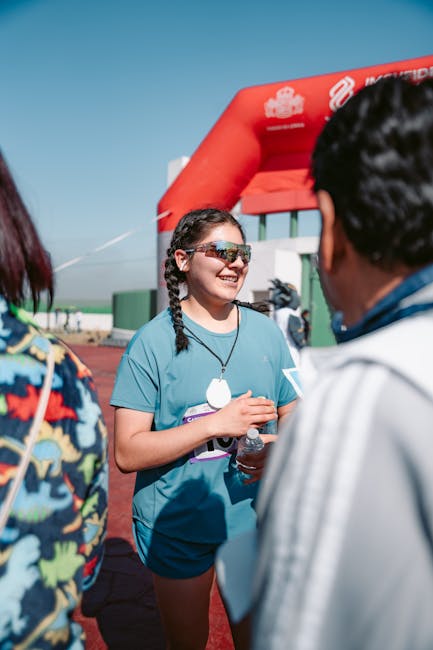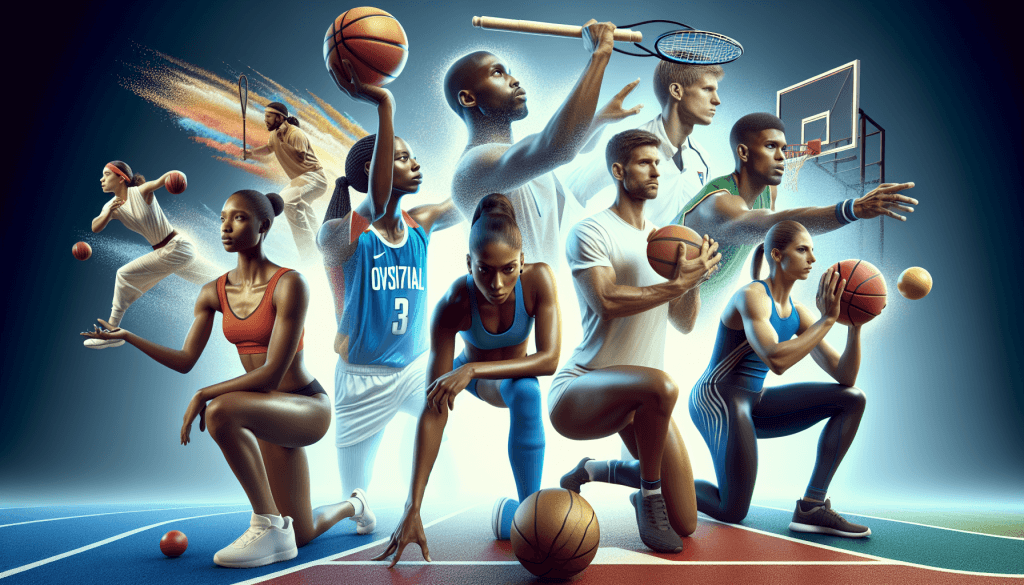Unlocking the Power of Visualization for Athletic Performance
Visualization is a powerful tool that can significantly boost athletic performance. Imagine being able to mentally rehearse your game-winning shot or visualize yourself crossing the finish line first. This mental practice can be as crucial as physical training. Keep reading to discover how visualization can transform your athletic journey and help you achieve your goals.
Key Takeaways
- Visualization is a mental technique that enhances athletic performance.
- It involves mental rehearsal, which is crucial for athletes.
- Visualization can improve confidence, focus, and mental resilience.
- Techniques include visual, kinesthetic, and emotional imagery.
- Integrating visualization into training can lead to long-term benefits.
Introduction to Visualization in Athletic Performance
Definition of Visualization
Visualization, often referred to as mental imagery, is the practice of creating vivid mental pictures of yourself performing a specific task. It’s like having a movie playing in your mind, where you are the star athlete. This technique is widely used by athletes to prepare for competitions and improve their skills.
Importance of Mental Rehearsal in Sports
Mental rehearsal is like a secret weapon for athletes. It allows you to practice your moves without physically moving a muscle. By visualizing your performance, you can enhance your muscle memory and improve your overall game. This mental practice is essential for athletes who want to excel in their sport.
Overview of Benefits for Athletes
Visualization offers a plethora of benefits for athletes. It can boost your confidence, sharpen your focus, and increase your mental resilience. By incorporating visualization into your training routine, you can enhance your performance and achieve your athletic goals.

Understanding Visualization Techniques
Creating a Mental Blueprint
Creating a mental blueprint involves visualizing every detail of your performance. From the way you move to the emotions you feel, this technique helps you mentally prepare for any situation. It’s like having a roadmap to success.
Types of Visualization Methods
Visual Imagery
Visual imagery involves picturing yourself performing a specific task. It’s like watching a highlight reel of your best moments. This technique helps you mentally rehearse your moves and improve your performance.
Kinesthetic Imagery
Kinesthetic imagery focuses on the physical sensations associated with your performance. It’s about feeling the movement in your mind. This technique helps you develop a deeper connection with your body and improve your muscle memory.
Emotional Imagery
Emotional imagery involves visualizing the emotions you experience during your performance. It’s about feeling the excitement, joy, and satisfaction of achieving your goals. This technique helps you stay motivated and focused.

Benefits of Visualization for Athletes
Increased Confidence
Visualization can boost your confidence by allowing you to mentally rehearse your success. When you visualize yourself performing well, you build a sense of self-assurance that can translate into real-life performance.
Improved Focus and Concentration
Visualization helps you sharpen your focus and concentration. By mentally rehearsing your performance, you can eliminate distractions and stay focused on your goals. This mental clarity can enhance your overall performance.
Enhanced Mental Resilience
Visualization can increase your mental resilience by helping you prepare for challenges. By visualizing different scenarios, you can develop a strong mindset and overcome obstacles with ease.

Advanced Visualization Techniques
Detailed Imagery and Sensory Engagement
Advanced visualization techniques involve creating detailed mental images and engaging your senses. By incorporating sights, sounds, and feelings into your visualization, you can create a more immersive experience that enhances your performance.
Emotional Connection to Performance
Developing an emotional connection to your performance can enhance your motivation and drive. By visualizing the emotions associated with your success, you can stay focused and committed to your goals.
Case Study: Olympians and Visualization
Many Olympians use visualization to prepare for their events. By mentally rehearsing their performance, they can improve their skills and achieve their goals. This technique has been proven to enhance athletic performance at the highest level.

Integrating Visualization into Training
Combining Mental and Physical Training
Integrating visualization into your training routine involves combining mental and physical practice. By visualizing your performance alongside physical training, you can enhance your skills and achieve your goals.
Developing a Visualization Routine
Creating a visualization routine involves setting aside time to mentally rehearse your performance. By incorporating visualization into your daily routine, you can improve your skills and achieve your goals.
Overcoming Mental Barriers
Visualization can help you overcome mental barriers by allowing you to mentally rehearse challenging situations. By visualizing yourself overcoming obstacles, you can develop a strong mindset and achieve your goals.

The Science Behind Visualization
Neurological Mechanisms
Visualization activates the same neural pathways as physical practice. By mentally rehearsing your performance, you can strengthen these pathways and improve your skills.
Psychological Benefits
Visualization offers numerous psychological benefits, including increased confidence, focus, and mental resilience. By incorporating visualization into your training routine, you can enhance your overall performance.
Research Studies and Findings
Research has shown that visualization can significantly improve athletic performance. Studies have found that athletes who use visualization techniques perform better than those who don’t. This technique has been proven to enhance skills and achieve goals.
Practical Steps for Effective Visualization
Step-by-Step Guide to Visualization
- Find a quiet place to relax and focus.
- Close your eyes and take deep breaths.
- Visualize yourself performing your task.
- Engage your senses and emotions.
- Repeat regularly for best results.
Tips for Developing Mental Imagery Skills
- Practice regularly to improve your skills.
- Focus on the details of your performance.
- Engage your senses and emotions for a more immersive experience.
Common Mistakes to Avoid
- Avoid negative thoughts and self-doubt.
- Don’t rush the process; take your time.
- Be consistent with your practice for best results.

Extending Visualization Beyond Sports
Application in Other Life Aspects
Visualization can be applied to various aspects of life, including academics, career, and personal development. By visualizing your success, you can achieve your goals and enhance your overall performance.
Enhancing Overall Performance
Visualization can enhance your overall performance by improving your confidence, focus, and mental resilience. By incorporating visualization into your daily routine, you can achieve your goals and excel in various areas of life.
Long-term Benefits for Athletes
Visualization offers long-term benefits for athletes, including improved skills, increased confidence, and enhanced mental resilience. By incorporating visualization into your training routine, you can achieve your goals and excel in your sport.
Conclusion
Recap of Visualization Benefits
Visualization is a powerful tool that can significantly enhance athletic performance. By mentally rehearsing your performance, you can improve your skills, boost your confidence, and achieve your goals.
Encouragement to Implement Techniques
Incorporating visualization into your training routine can lead to significant improvements in your performance. By practicing regularly, you can develop a strong mindset and achieve your goals.
Final Thoughts on Mental Training for Athletes
Visualization is an essential component of mental training for athletes. By incorporating this technique into your routine, you can enhance your performance and achieve your goals. So, why not give it a try and see the difference it can make in your athletic journey?
Unlocking Potential: FAQ on Using Visualization for Athletic Performance
What is visualization in the context of athletic performance?
Visualization, also known as mental imagery, involves creating a mental image or intention of what you want to happen or feel in reality. In athletics, it is used to mentally rehearse skills, strategies, and scenarios to enhance performance.
How does visualization improve athletic performance?
Visualization helps athletes by enhancing focus, reducing anxiety, and improving confidence. By mentally rehearsing their sport, athletes can prepare for various situations, refine their techniques, and build muscle memory, which can lead to improved performance.
Can visualization be used by athletes of all levels?
Yes, visualization can be beneficial for athletes at any level, from beginners to professionals. It is a versatile tool that can be tailored to fit the needs and goals of any athlete, regardless of their experience or skill level.
What are some common techniques used in visualization for athletes?
Common techniques include guided imagery, where an athlete is led through a visualization exercise by a coach or recording, and self-directed visualization, where athletes create their own mental scenarios. Techniques often focus on specific skills, entire performances, or overcoming obstacles.
How often should athletes practice visualization?
The frequency of visualization practice can vary based on individual needs and goals. However, regular practice, such as daily or several times a week, is recommended to build and maintain the mental skills necessary for effective visualization.
Can visualization replace physical practice?
While visualization is a powerful tool, it should not replace physical practice. Instead, it should complement physical training by enhancing mental preparedness and reinforcing skills learned during physical practice.
Are there any scientific studies supporting the use of visualization in sports?
Yes, numerous studies have shown that visualization can positively impact athletic performance. Research indicates that mental imagery activates similar brain regions as physical practice, suggesting that visualization can effectively enhance skill acquisition and performance.
What are some challenges athletes might face when starting visualization?
Some athletes may find it difficult to create vivid mental images or maintain focus during visualization sessions. It can also be challenging to integrate visualization into their routine. However, with practice and guidance, these challenges can be overcome.
How can athletes measure the effectiveness of their visualization practice?
Athletes can track their progress by setting specific goals and monitoring improvements in their performance, confidence, and mental resilience. Feedback from coaches and self-assessment can also provide insights into the effectiveness of their visualization practice.
Can visualization help with injury recovery in athletes?
Yes, visualization can be a valuable tool in injury recovery. By mentally rehearsing movements and maintaining a positive mindset, athletes can aid in the healing process, reduce recovery time, and prepare for a successful return to their sport.



